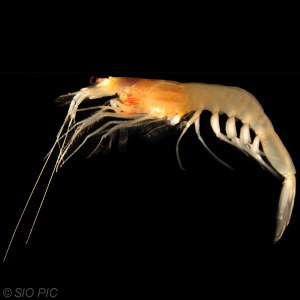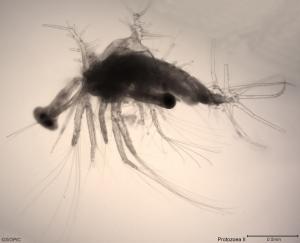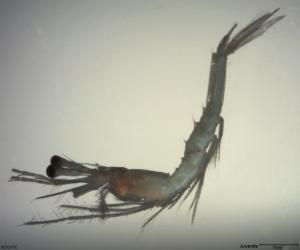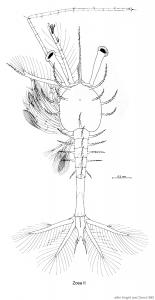Sergestes similis
Distribution:
North Pacific Ocean, Japan through Alaska and the southwest Bering Sea south along the Amereican coast to the Gulf of California; off Chile, and in the eastern South Atlantic.
Habitat:
Larvae planktonic; adults are mesopelagic, mostly oceanic.
Size:
Larvae 0.5-5.8 mm; adults 40-54 mm total length.
Diet:
Euphausiids and copepods.
Predators:
Food for albacore, rockfish and squid.
Useful Facts or Characters:
The larval stages include 4 naupliar stages, 3 protozoea stages, and 2 zoea stages. The protozoea are characterized by a spiny carapace and a forked telson.
Natural History:
A common midwater shrimp.
References:
http://www.wallawalla.edu/academics/departments/biology/rosario/inverts/...
Knight, M., and Omori, M. (1982) The larval development of Sergestes similis Hansen (Crustacea, Decapoda, Sergestidae) reared in the laboratory. U S Fish and Wildlife Service Fishery Bulletin 80: 217-243.






